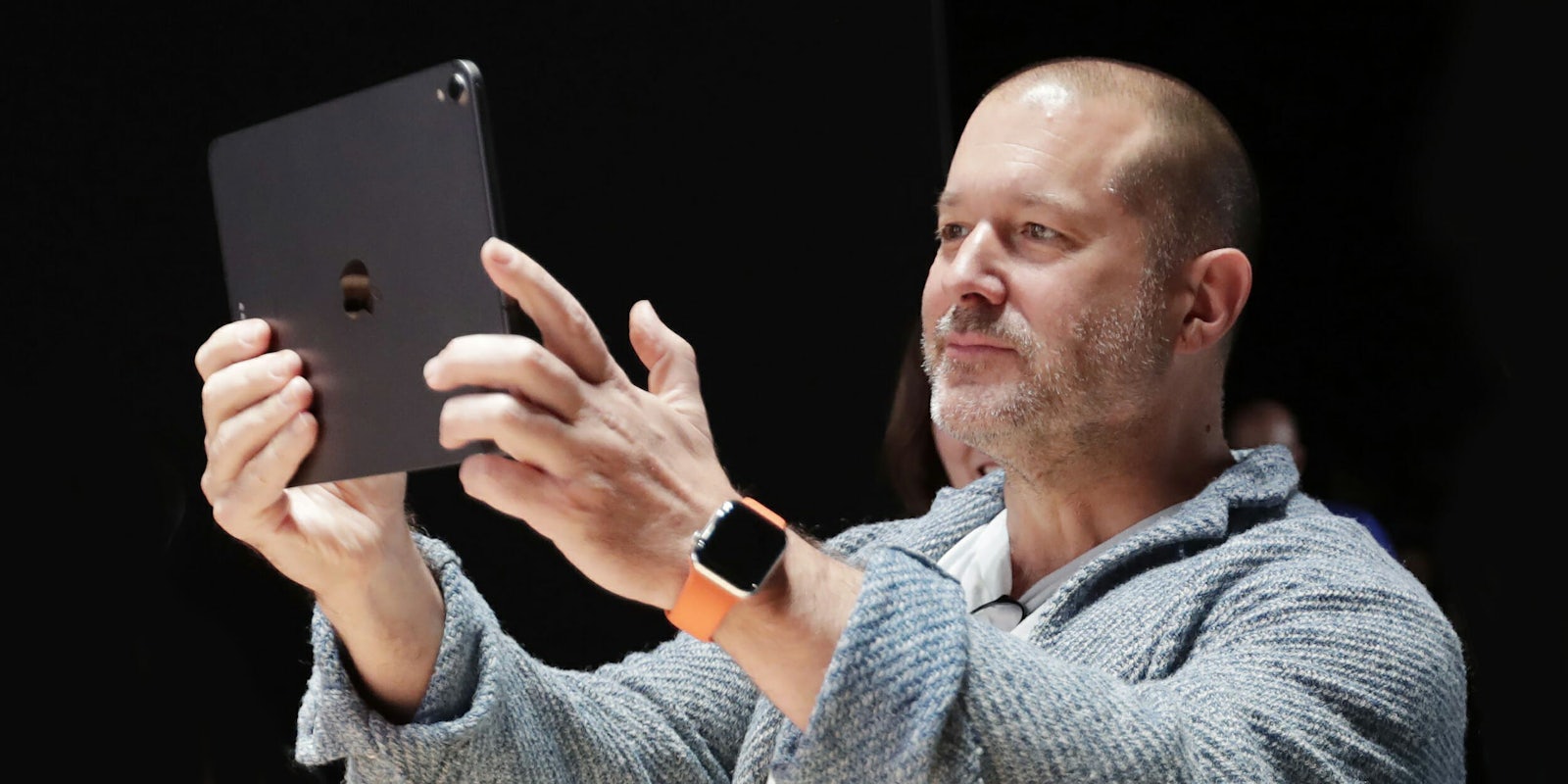On Thursday, Apple announced that its chief designer Jony Ive resigned from the company. Ive is starting his own design firm, LoveFrom, with Apple as its first client. “While I will not be an [Apple] employee, I will still be very involved—I hope for many years to come,” Ive told the Financial Times in an exclusive interview about his departure. “This just seems like a natural and gentle time to make this change.”
In many ways, Ive is right: Apple has long dominated the consumer technology industry, and its stranglehold over the mobile app marketspace has positioned it well to continue to do so. Last month at WWDC, Apple’s annual developer conference, Apple announced that the App Store is home to 20 million developers, that it’s created more than 1.5 million U.S. jobs, and has helped programmers earn more than $120 billion worldwide. The App Store is not without its faults, but the fact remains that it’s the most viable path forward for app creators, and this gives Apple a major advantage over its competitors going forward—with or without Ive, whose primary focus was hardware design.
In fact, in recent years hardware became something of a weak spot for Apple. Though AirPods managed to become a consumer hit, they were initially mocked for their less-than-stunning looks; they remain a point of contention and controversy, often referred to as a symbol of technology elitism. Then there was the MacBook keyboard issue that plagued the company this past spring. And while Apple designers, under Ive, managed to elevate the iPhone to become a luxury technology product (and to be associated with a much higher price point), the smartphone has been criticized for its too-easily shattering screens, difficulty (in some cases impossibility) to repair, and ongoing battery issues.
Where does Apple go from here?
Ive might be wrong about his departure coming at a “natural and gentle time”: The iPhone is Apple’s cash cow, and its sales are slipping. The upgrade cycle is finally starting to wane on consumers. The biggest criticism of Ive has always been that he’s a designer first, that he will sacrifice usability and function in favor of insanely thin, beautiful products. Perhaps that penchant for looks above all else came at a cost, but it’s also true that Apple fans are obsessed with aesthetics. The post-Ive Apple will see its designers placed under the operations team, maybe indicating that the company is focused on addressing its wonky hardware issues. But will it sacrifice its compulsive dedication to product form factor? Apple buyers have shown they don’t just want workhorses—they also want them to be beautiful.
Apple is at a crossroads. Competition is heating up, China is losing interest in its smartphones, and in the midst of it, Ive is leaving. The company will undoubtedly retain its market standing, but it certainly feels as if it’s weathering an internal struggle.
Ive was a bit of an omnipotent, unseen figure at Apple—the wizard behind the curtain (almost literally, as he preferred to appear at launch events via voiceover only); it can be difficult to understand the totality of his effect at Apple, and beyond. Here is the recommended reading on Jony Ive, including reactions to his exit as well as past reports that may help the consumer technology world read the tea leaves on what this means for Apple’s future.
- The penultimate Apple source and analyst John Gruber’s excellent take on Ive’s exit wastes no time getting to the point: “Today’s MacBooks are worse computers but more beautiful devices than the ones they replaced. Is that directly attributable to Jony Ive?”
- Market analysts believe Apple will be fine without Ive; this story notes a 2013 interview where he talked about wanting to design cups and chairs.
- Last year, a user noticed that the iOS keyboard autocorrect had different rules for Jony Ive and his wife, Heather Ive. (Or, apparently, “Heather I’ve.”)
- Ive’s obsession with opulence was never on better display than when he designed this diamond ring. Naturally, it’s bezel-less.
- “[Ive] leaves a legacy of pushing its products toward disposability and unrepairability, a choice that has reverberated across the consumer electronics industry.” Read Vice’s critical look at the consequences of Ive’s “design at all costs” ethos, and the tone it set for the entire market. (They’re not wrong.)
- In 2012, the Ive era began—and any future for skeuomorphic design (wherein real-life attributes are added to software) was killed. The “flat design” trend was kickstarted.
- Around 2015, the world hit peak Ives obsession; the designer could do no wrong—he even helped J.J. Abrams design the lightsabers for The Force Awakens. it was during this period of time that his voice-over videos became an expectation at Apple events.
- …And, of course, those voiceovers included the word “aluminum,” and everyone knows the delightful way in which British people say “a-loo-min-ee-um.” The voiceovers inspired a YouTube video airing the phrase in Ive’s voice on a loop; someone even created a soundboard to include Ive saying all sorts of things (i.e. “soft, quilted leather”). Ive was reportedly not a fan of the projects.
- “I’ve leave Apple if it stopped innovating,” Ive said in 2014.
- Never forget that in 2016, Ive designed a Christmas Tree.
Got five minutes? We’d love to hear from you. Help shape our journalism and be entered to win an Amazon gift card by filling out our 2019 reader survey.


